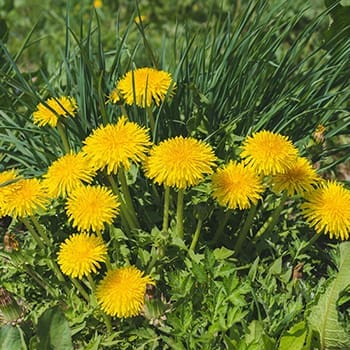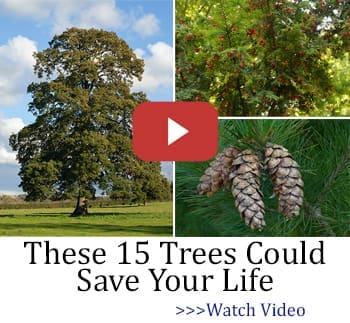The image of a gardener down on their knees, hard at work pulling weeds is one that we probably remember from watching our grandparents gardening. However, there comes a time when every gardener realizes that some weeds need to be left alone because they are actually beneficial to our gardens. Let’s take a look at these lovely plants and why we should leave them be.
Dandelions
This one is pretty well-known these days, or one would certainly think that it is. Dandelions are some of the first foods that beneficial insects have access to after the long, cold winter days. This cheerful little flowering weed should be left to flower and provide food for your bees, butterflies, and everything else fluttering through on its way to make your garden its new home.
In fact, some local gardening clubs may even offer wildflower mixes that include dandelions to encourage pollinators to visit your yard and to get them going.
Poison – Oak, Ivy, Sumac
The trio that makes you itch and break out in rashes. Yes, I know you’re looking at us like we’ve lost our minds: I assure you, we haven’t.
I encourage you to leave these alone unless you are absolutely certain that you, a pet, or a loved one will be injured by them. If that’s in the cards, go ahead and remove these plants (extremely carefully and gently!). But, if you can keep them around, we suggest doing so.
Why? Most small animals that will weasel into your garden and start ripping it up really, really hate the smell of these itchy plants and will avoid areas with them. A natural deterrent for squirrels, rats, rabbits, and the such; we don’t recommend anyone go out of their way to plant it but there’s nothing wrong with leaving it alone or just trimming it back (with lots of protection on!) enough to keep it out of direct contact with you and your loved ones.
Milkweed
Milkweed is a beneficial liver-boosting supplement for humans and other animals alike, but it goes so far beyond that. Also, milkweed is absolutely necessary for the survival of certain types of butterflies, including monarchs. Their larvae eat nothing but milkweed plants and the benefits of offering them a place to lay their young gives you a chance to watch their terrific pollination skills in action.
Additionally, I’ll be entirely honest here: I am somewhat biased. The monarch butterflies need this plant, but I love the appearance of it so much that I can’t imagine cutting it down. It comes in so many colors and is a woody, different sort of plant next to your garden and it won’t hurt anything. In fact, many viny plants (such as green beans) seem to love climbing it. Keep your milkweed around and you won’t regret it, I promise.
Purslane
We’re going to start this subsection with a warning: if you have kidney problems, do not eat purslane. If you think you may have kidney problems, talk to your doctor first. This won’t land you in the hospital for having one small meal of them, but they will absolutely tank your kidney levels over a very short period if you are already sensitive in that direction. Medically typical people will be fine, but kidney patients will not.
Purslane is a small leafy green that grows wild, free, and extensively throughout America. Some people even grow it specifically for salads and as a stir-fry green. It reminds me somewhat of arugula but with less bite to it.
If you have not specifically planted this green to grow it for food, please be aware of what it has been treated with and be certain of its identity before you put it in your mouth. There are many weeds that look similar to purslane and many of them are poisonous. None of these are likely to cause you long-term damage (with the exception of kidney patients), but most of them will leave you with a weekend to remember, and not in a fun way.
That said, if you want to put purslane in a pot and trim it back every now and again, you’ll have a perfect peppery little green for your salad. Eat up!
Nettles
Nettles are a vast array of plants that have a stinging sensation or may even have tiny barbs stick to the skin when touched. While this can complicate matters, especially with pets and children around, just keep them out of the nettle patches. They’ll learn pretty quick where they are if you can’t do this and most will learn to avoid them on their own. The problem there being that this lesson can cost you a pretty penny at the emergency vet or at the hospital to get these tiny prickly barbs removed. A hot wire around nettles may be a good idea for very ambitious pets, livestock, or even little ones as opposed to a late-night medical call.
Related: If You See This Jumping Worm In Your Garden, Kill It Immediately!
Some varieties of nettles can be used for tea to ease women’s issues and improve circulation, along with many other swelling-based ailments. We also see ladybugs laying profuse amounts of eggs in nettles throughout the year, often with thousands of tiny ladybugs emerging from these patches. Why? The eggs are extremely safe within the nettle patch. Smart momma ladybug!
If you must remove nettles, try to only trim them back so far as required so you’ll still have somewhere for your ladybug population to lay their eggs. Remember to wear the strongest pair of gloves that you own; nettles will easily slice through plain cloth gloves.
While there are thousands of other beneficial weeds out there, these are just a few that we picked to introduce you to. We hope that we’ve changed your mind about tearing out everything that you didn’t personally plant and that you’ll consider keeping these excellent weeds on for the growing season, to feed your pollinators, your family, and to safeguard your plants’ future.
Have we? Chime in on the comments section down below and remember, Happy Gardening!
How To Use Weeds To Read Your Soil
If You See This Plant in Your Backyard, Burn It Immediately! (Video)
What Happens When You Use Backing Soda In Your Garden?











